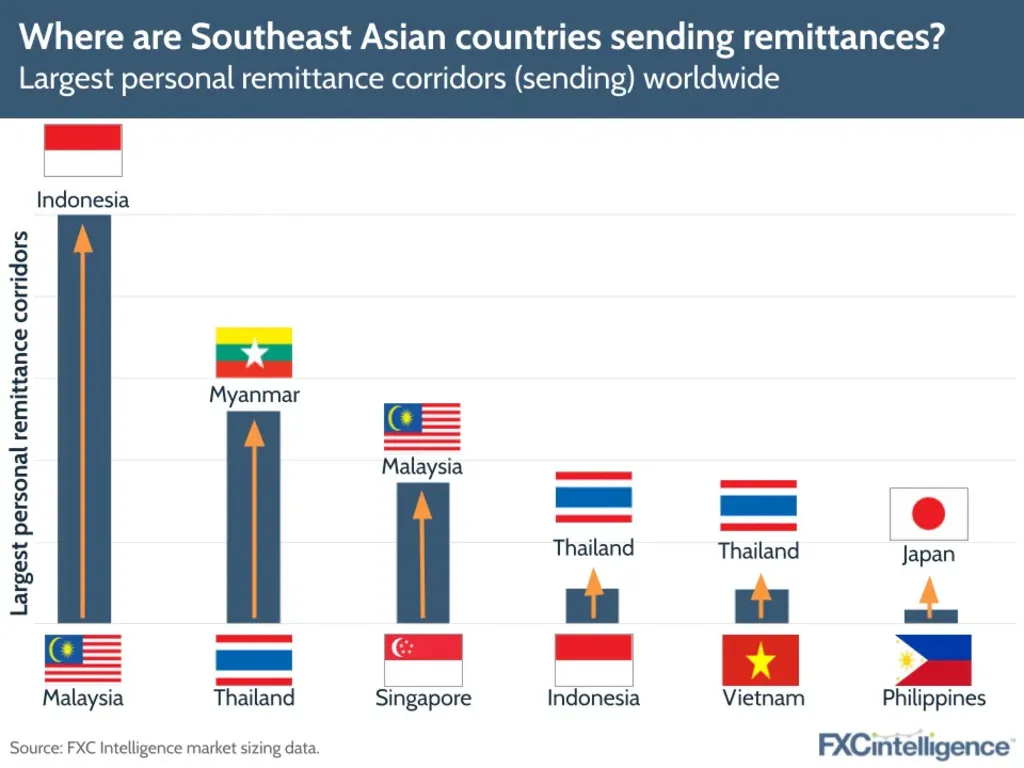Money sent home by migrant workers is more than a lifeline for their families back home—it’s a quiet economic engine. Southeast Asia remittance flows are projected to reach $98.12 billion in 2025, growing at an annual rate of 8.22% to hit $145.62 billion by 2030. This surge highlights the growing importance of remittances in supporting families, driving consumer spending, and stabilizing national economies.
The Philippines: At the Heart of Southeast Asia Remittance Flows

Nearly half of all remittances to Southeast Asia in 2021 went to the Philippines, thanks to the massive overseas Filipino workforce. In the first 10 months of 2024, remittances from Filipinos abroad reached $28.8 billion, even surpassing pre-pandemic levels. These funds account for roughly 8.5% of the country's GDP, making them a critical contributor to both household budgets and the national economy.
Beyond GDP contributions, remittances play a transformative role in reducing poverty and funding education across the region. Still in the Philippines, studies show that households receiving remittances experience a 30% lower poverty rate compared to non-recipient families.
A Shock-Absorbing Stream of Support
Remittances are often countercyclical, meaning they rise when local economies weaken. During the COVID-19 pandemic, while global financial systems were shaken, remittance flows to low- and middle-income countries declined by just 1.6% in 2020—a surprisingly small dip that proved their resilience. For Southeast Asia, this meant millions of families could continue to pay for essentials like food, education, and healthcare even during crises.
Beyond individual survival, these cash flows help stabilize consumption, supporting local businesses and maintaining circulation in the economy. This stabilizing effect is especially crucial in countries where remittances make up a large portion of external financing. The Asian Development Bank notes that from 2014 to 2018, remittances accounted for around 20% of total external financial flows to Asia and the Pacific.
Read Also: Southeast Asia Digital Nomads and Economic Spark
Tech, Migration, and the Future of Southeast Asia Remittance Flows
Looking ahead, several factors are accelerating remittance growth. First is international migration, which continues to rise as workers seek better opportunities abroad. Second is the rapid spread of fintech solutions. Mobile-based transfer platforms are reducing fees, speeding up delivery, and making remittances more accessible to remote households.
In a region where mobile phone usage is high, digital innovation is improving the way money moves. This isn’t just about convenience—it’s about expanding financial inclusion and ensuring that more families can safely and efficiently receive the support they depend on.
Read Also: Southeast Asia Cross-Border Trade Goes Digital
Southeast Asia Remittance Flows: More Than Just Money
Southeast Asia remittance flows are more than a cash pipeline—they are an economic stabilizer, a development tool, and a form of insurance during uncertain times. With projected growth reaching nearly $146 billion by 2030, their role is set to become even more critical.
For policymakers and businesses, understanding the impact of remittances is essential. These flows shape GDP, drive consumer demand, and support financial resilience in communities across the region. As digital innovation and migration trends evolve, remittances will remain a powerful—and often overlooked—force in Southeast Asia’s economic story.







